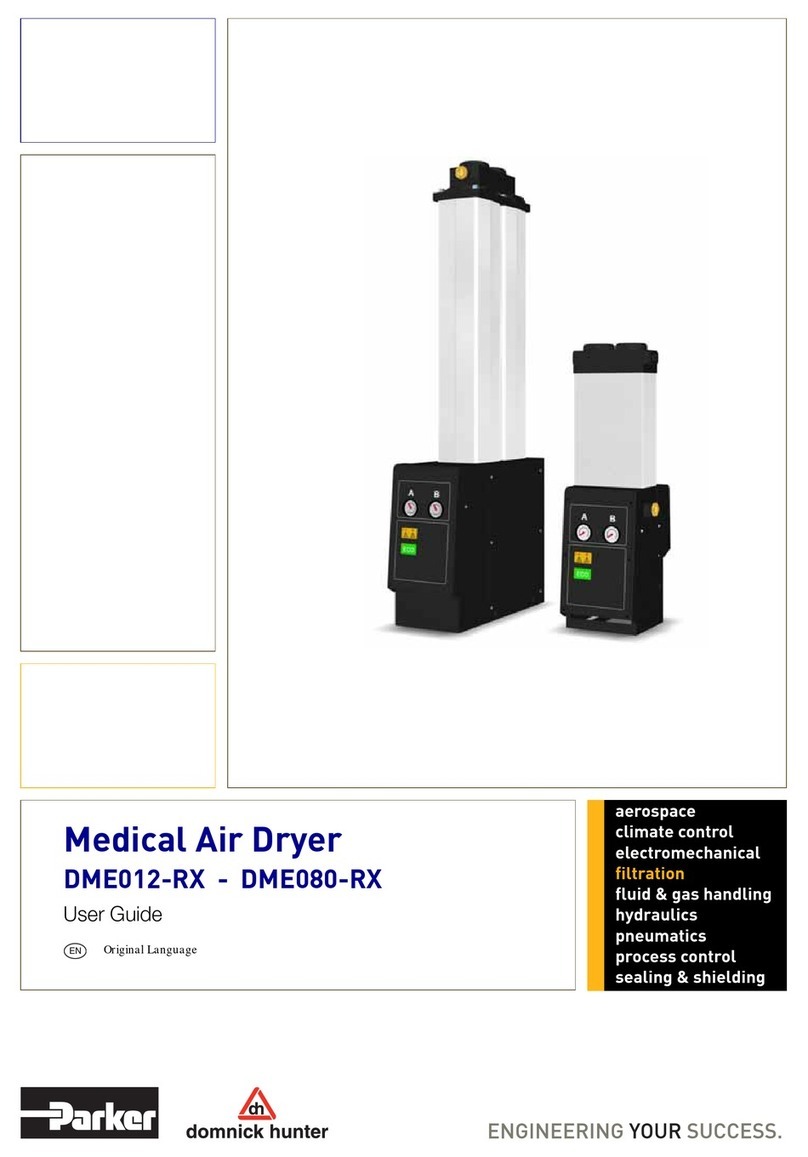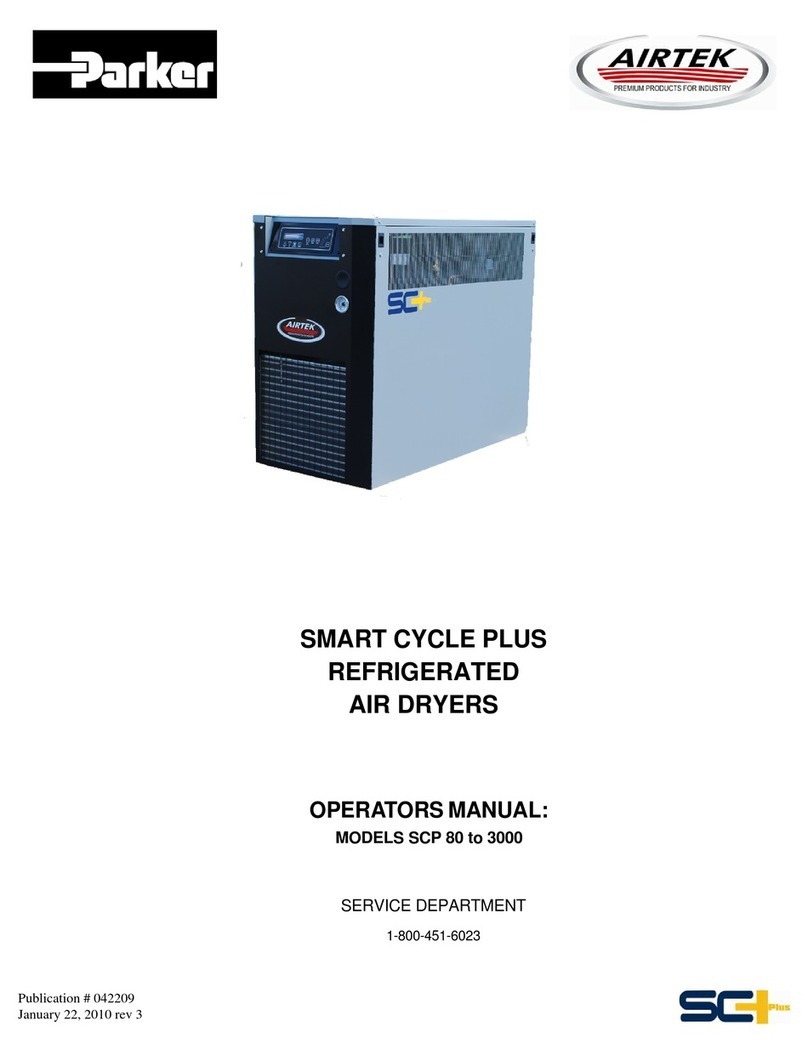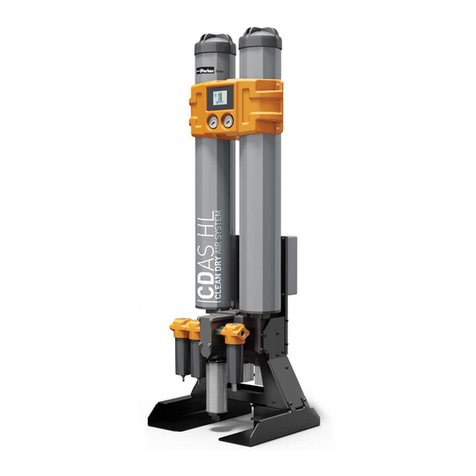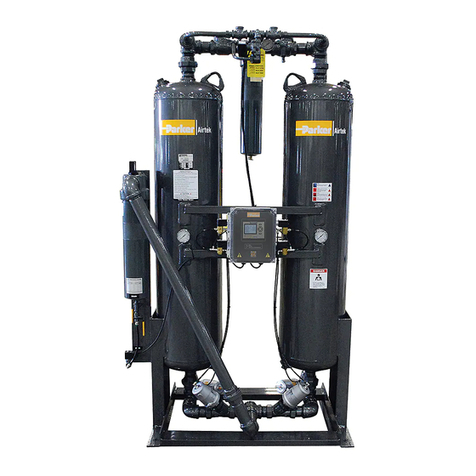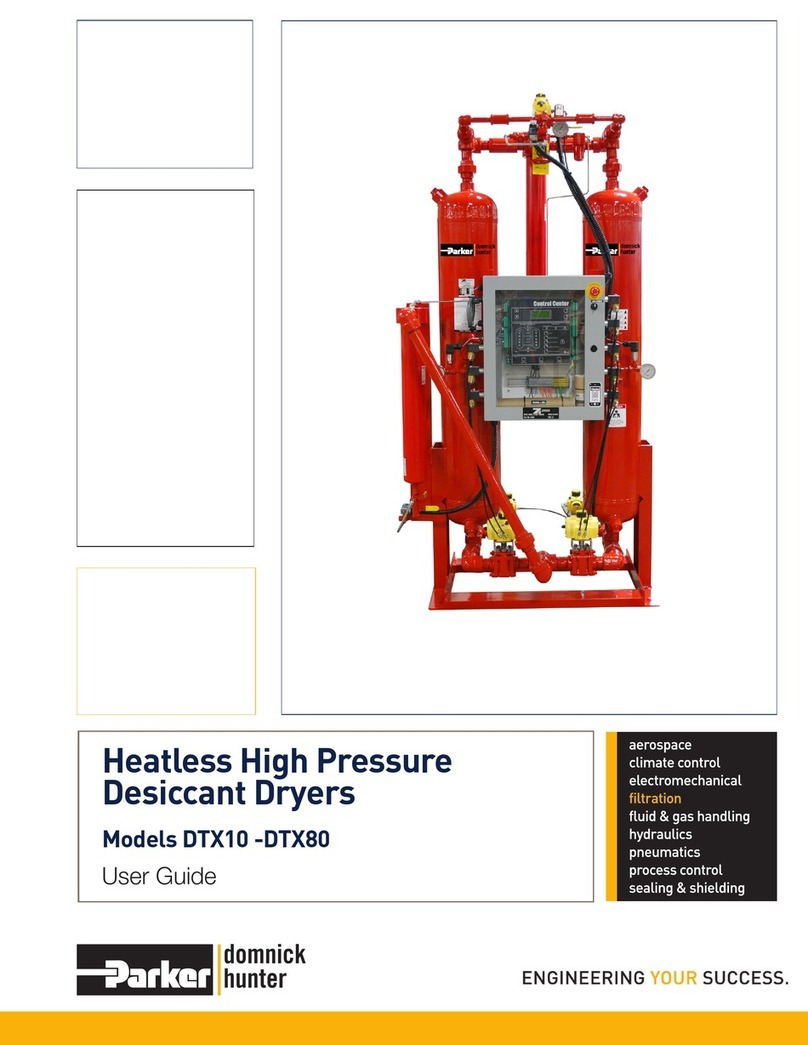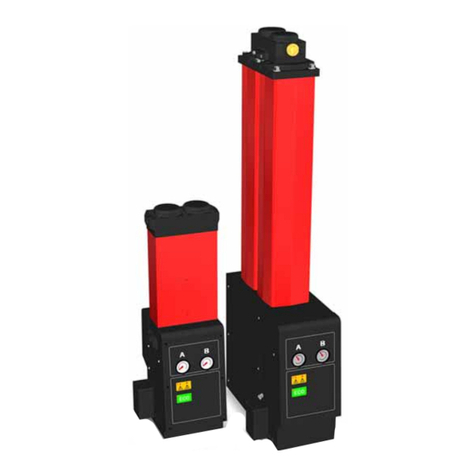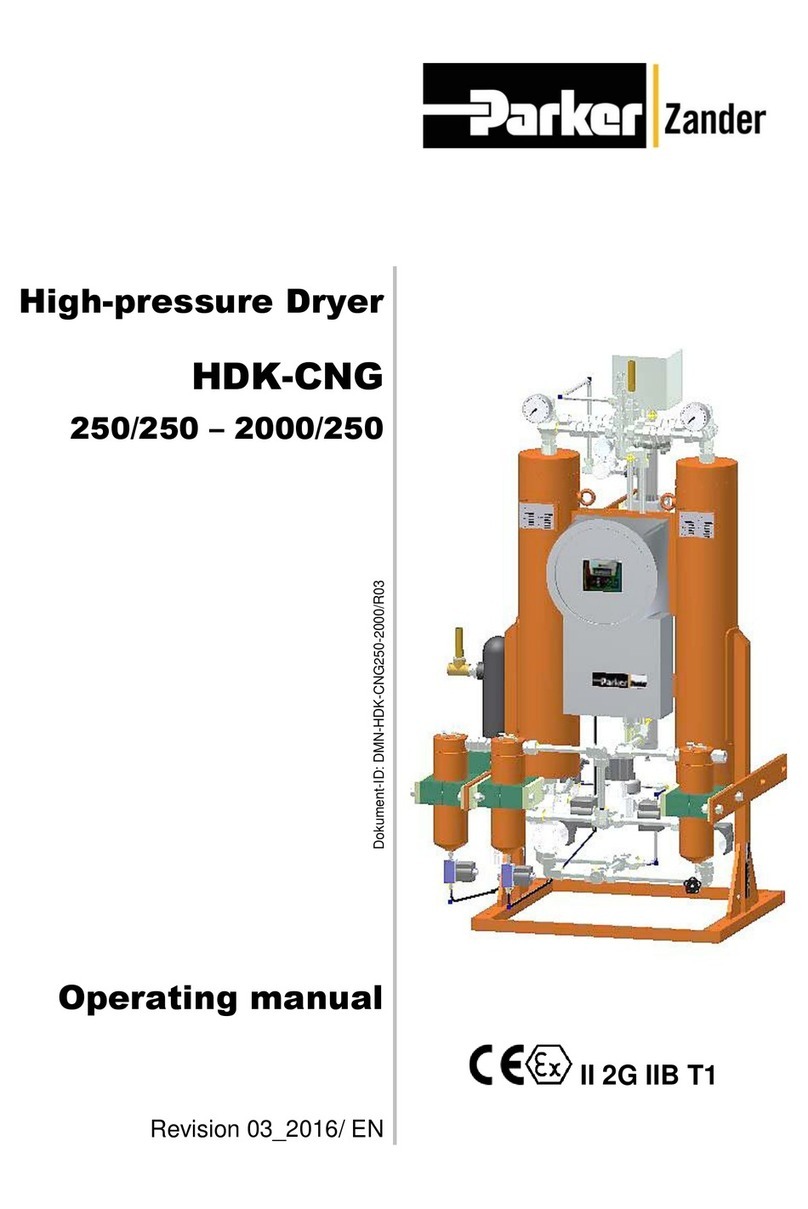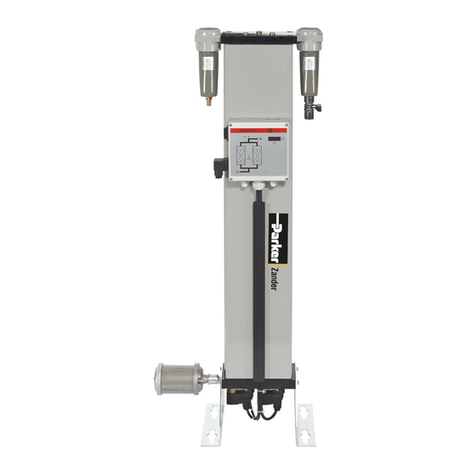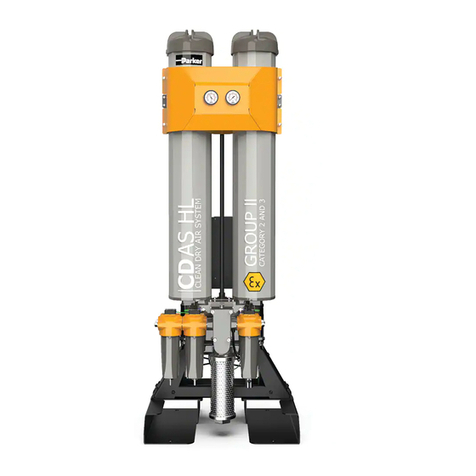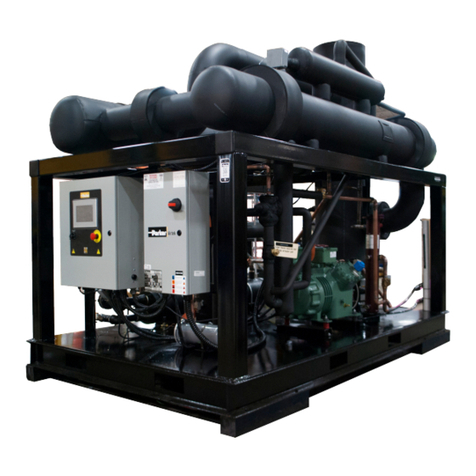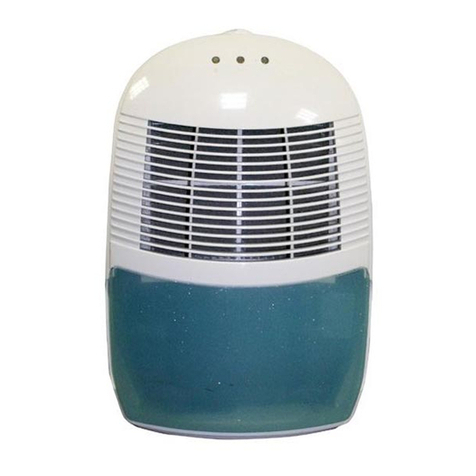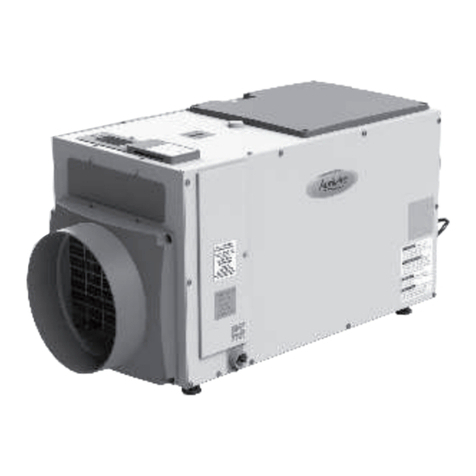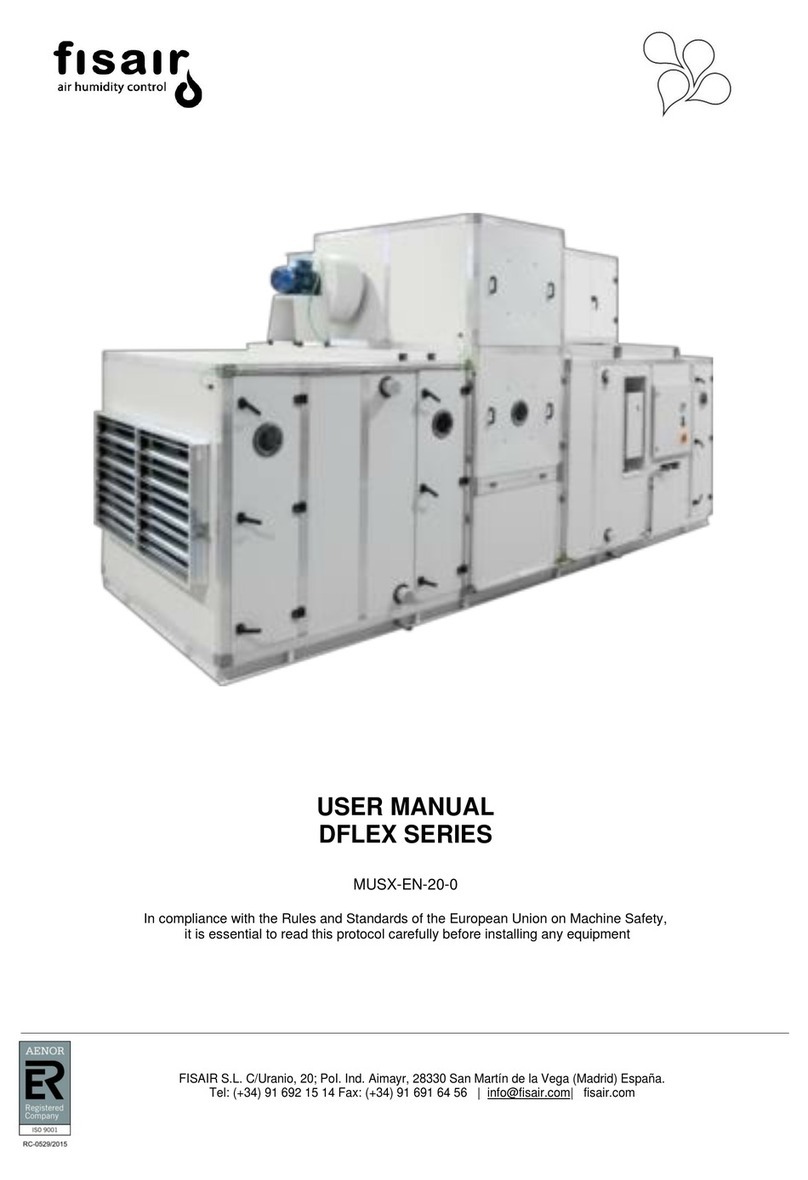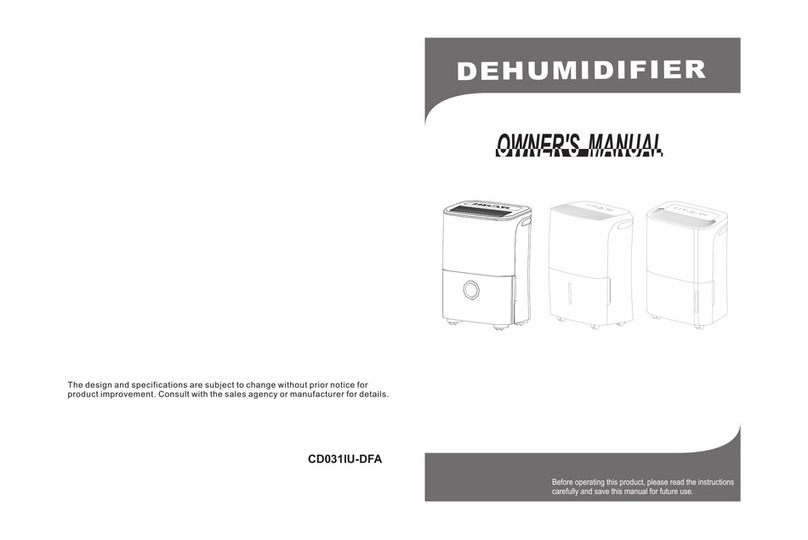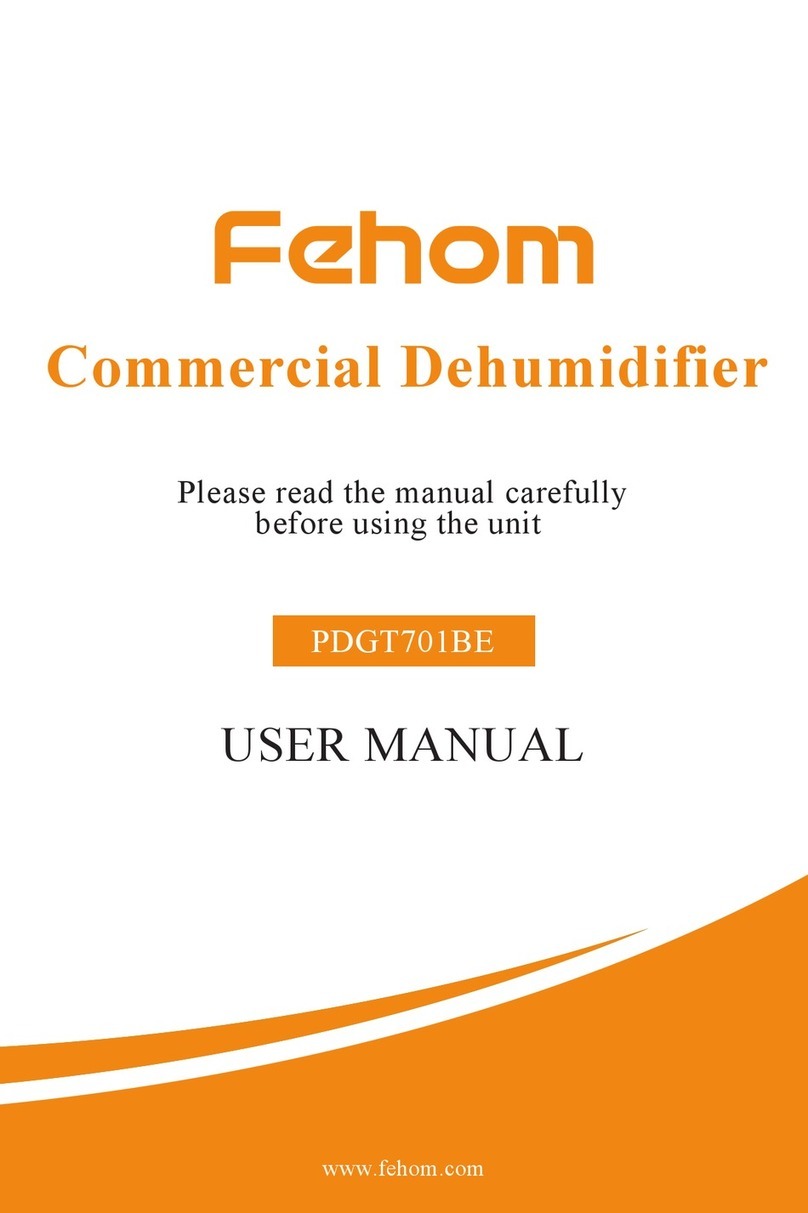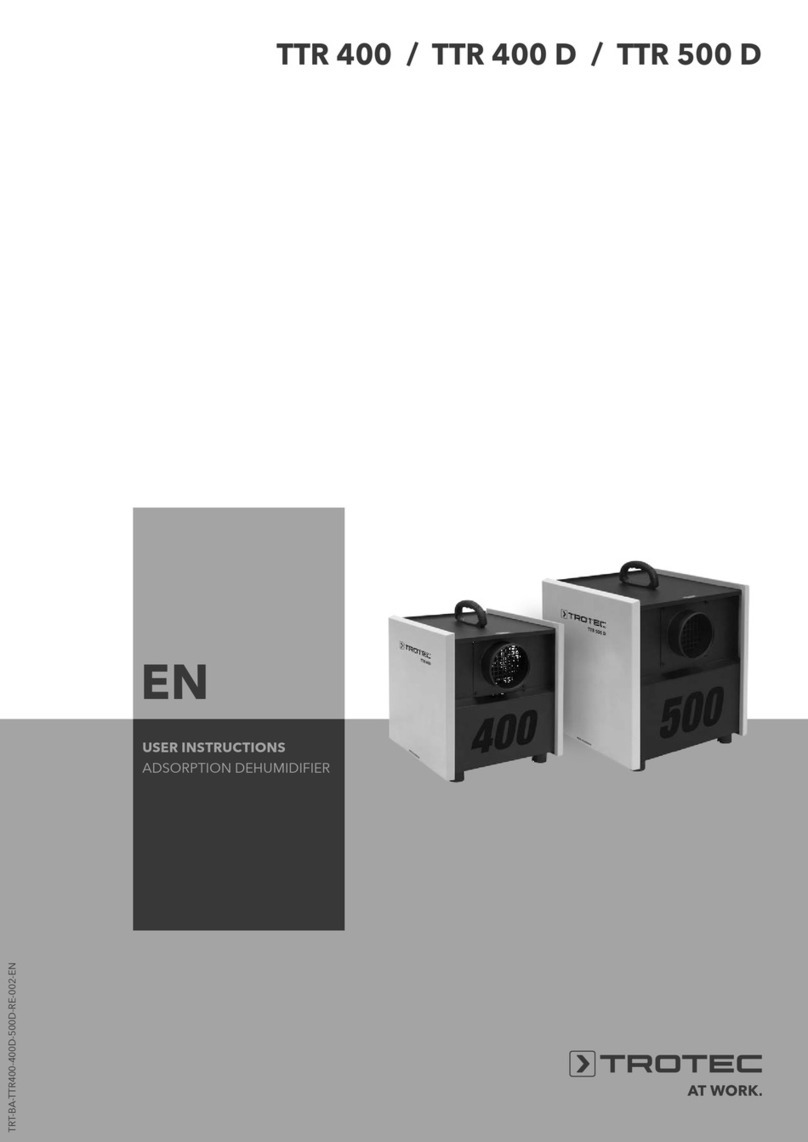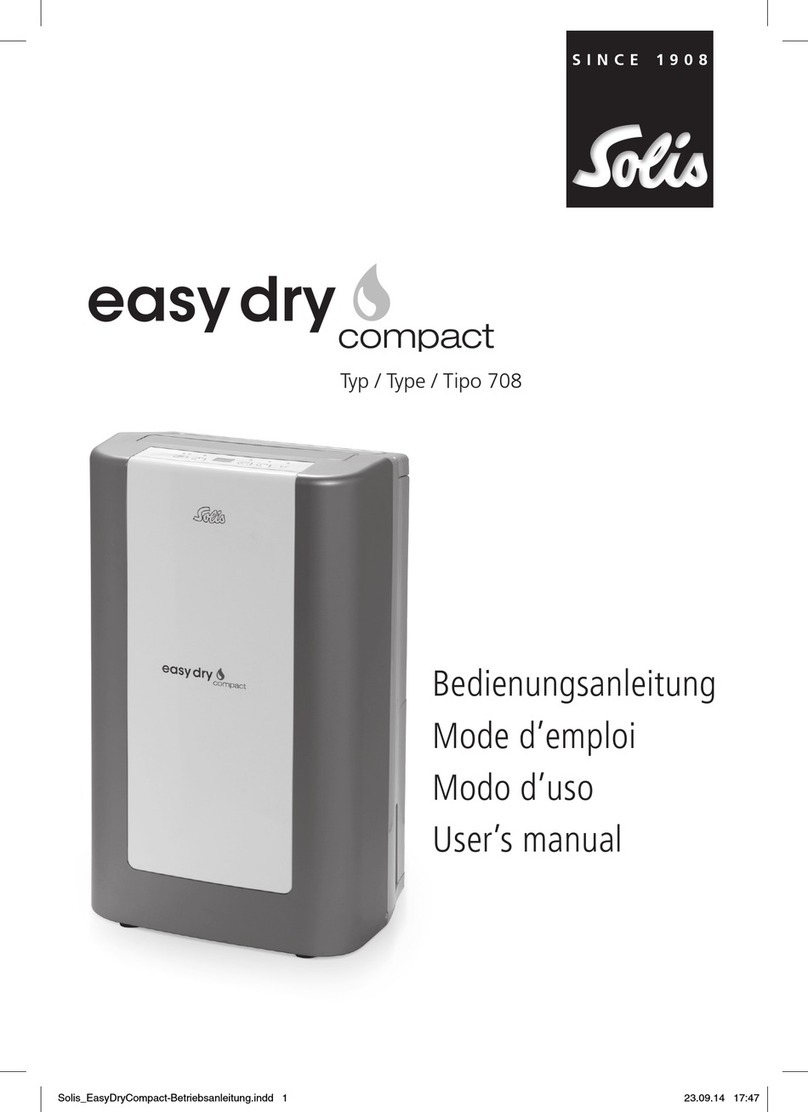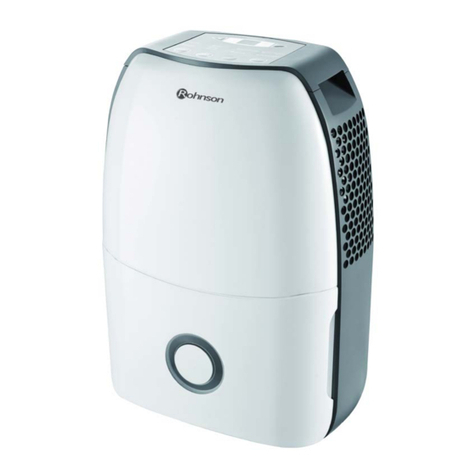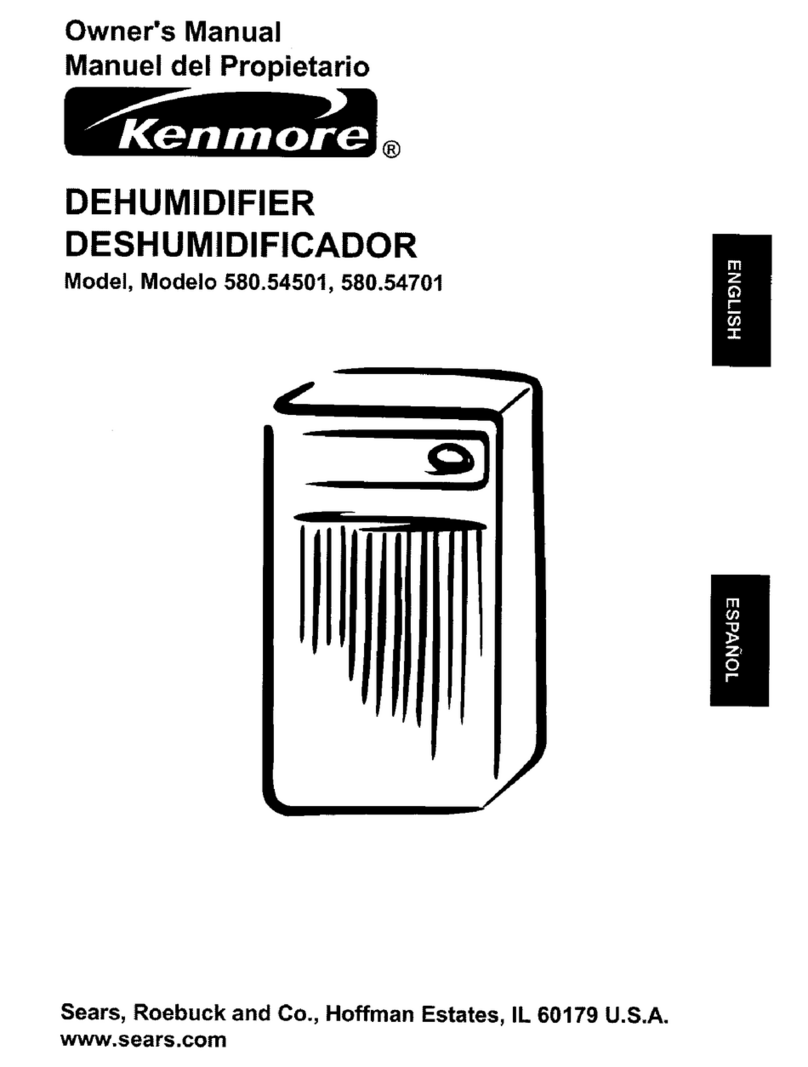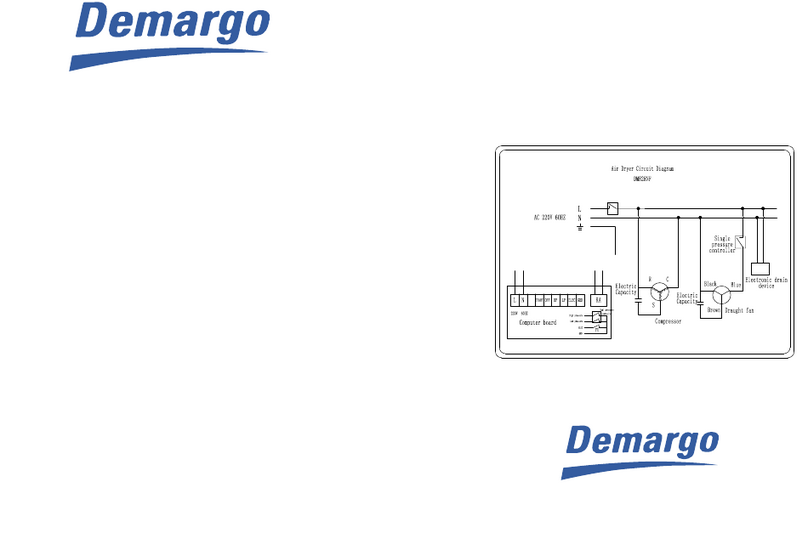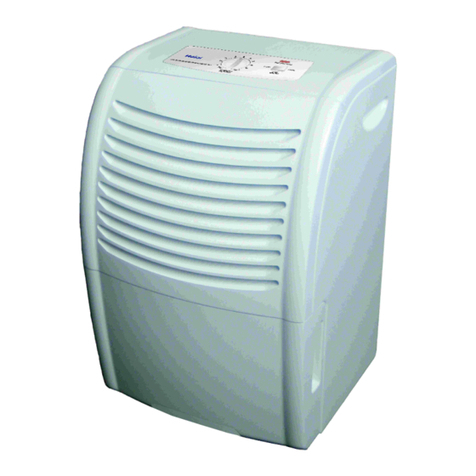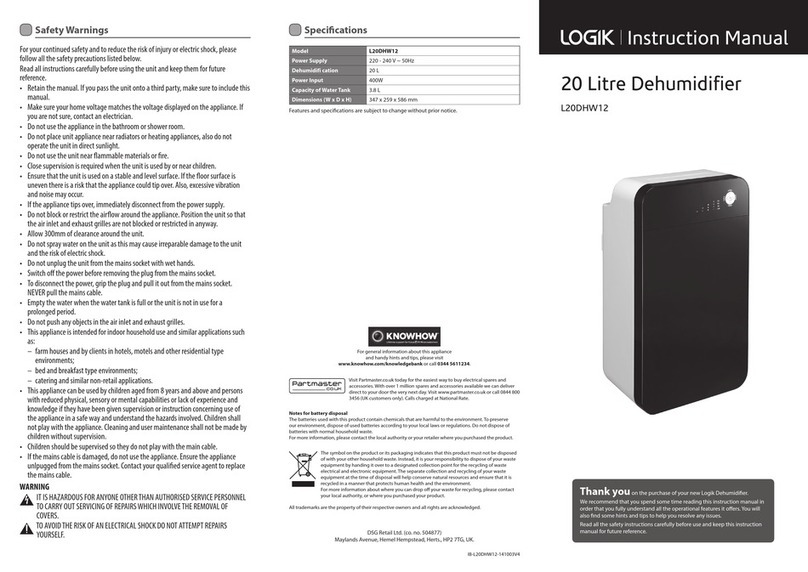
7
MSC4000 - MSC15000 USER GUIDE
4. Start Up Procedure
4.1 Preliminary Checks
Before starting the dryer, verify that the compressed air valves are closed so there is no airow
through the dryer, the dryer supply voltage is correct, and there is sufcient water supply to the
unit (water cooled). Also ensure unit is level at this time.
4.2 Refrigeration Service Valves
Open all valves marked with a “VALVE CLOSED” label.
Note: Always use a refrigeration service valve wrench on the spindles.
Remove the black plastic cap and completely backseat the valve spindle (counter clockwise) on
service valves and turn all 90 deg valves to the open position.
Note: Before replacing the caps, tighten the packing on all service valves.
4.3 Starting the Dryer
• Open the electrical panels and verify all electrical connections prior to powering up the dryer.
• Check and verify the service switch is in the “OFF” position.
• Close panels and supply power to the dryer.
• After power has been applied the control panel should say “OFF” and the crankcase heater
will now start heating.
• THE CRANKCASE HEATER MUST BE SWITCHED ON 12 HOURS BEFORE STARTING THE
DRYER. Failure to comply with this rule may cause serious damage to the compressor.
• Open the condenser water supply and return valves on water-cooled units.
• If necessary, bleed the air from the condenser water shell.
START THE DRYER BEFORE SUPPLYING AIR!
• Turn the service switch to the “ON” position. The refrigeration compressor may run
momentarily.
• Depress the “LOAD / UNLOAD” button to start the dryer.
• Verify correct rotation of fans on air-cooled units. There is no rotation that needs to be
checked on water-cooled units.
• Wait until the dryer reaches cycling temperatures and pressures.
Note: If the dryer overshoots the “OFF” temperature 30-32ºF (-1-0ºC) and you experience an
“E-1” alarm, SLOWLY pressurize the dryer by opening the compressed air inlet valve and verify
the cable connection as outlined in the operation and troubleshooting manual. Due to the thermal
bank effect of the ooded evaporator, it is normal for the dew point temperature to fall below the
“OFF” temperature after the refrigeration compressor shuts down with little or no load. The alarm
should clear once the dew point probe temperature rises into its operating range.
Verify the liquid level in the expansion tank sight glass for proper oil return! Adjustment is
usually not required, and the refrigerant level must be veried after 24 to 48 hours of operation.
Adjust as necessary, using the level control valve (TXV). Counterclockwise raises the level &
clockwise lowers the level. The oil level in the refrigeration compressor should be between ¼
and ¾ in the compressor sight glass. Contact Customer Service if there are ANY questions. The
refrigerant level will rise and fall during normal operation.
CAUTION: If liquid level is not operating within this site glass, there will be insufcient oil return
and refrigerant compressor damage will result. If there is excessive liquid (overll) in the expansion
tank, there will be liquid ood-back and refrigerant compressor damage will result.
• SLOWLY open the air inlet valve gradually to pressurize the dryer if this has not already been
done.
• SLOWLY open the air outlet valve.
